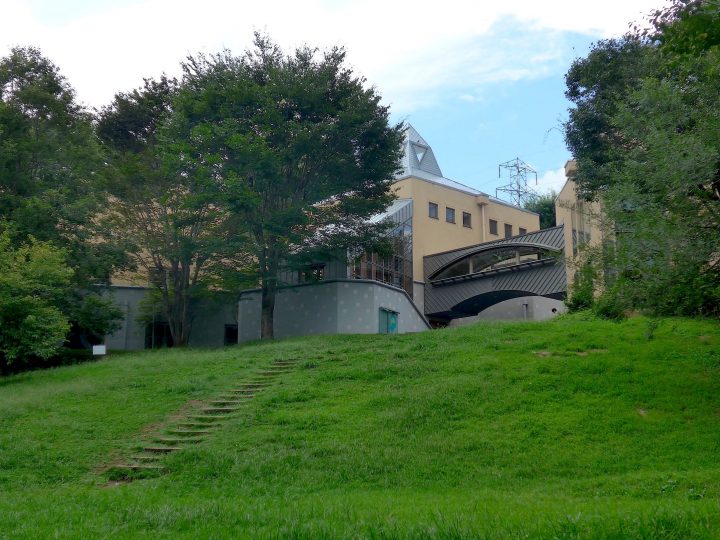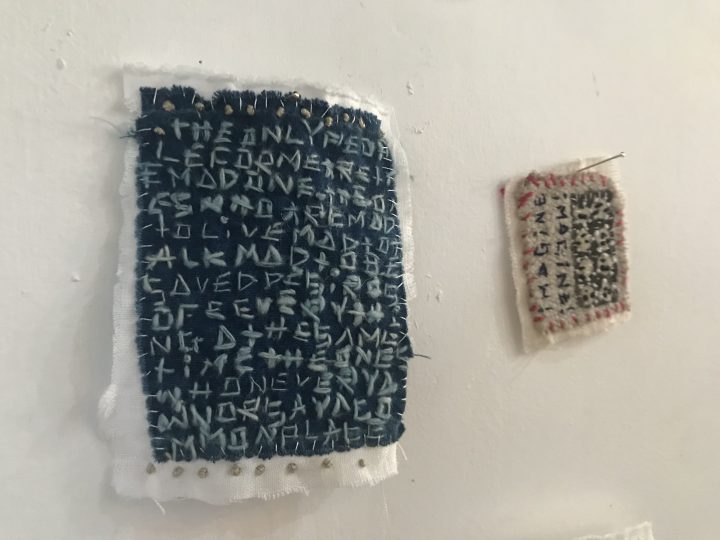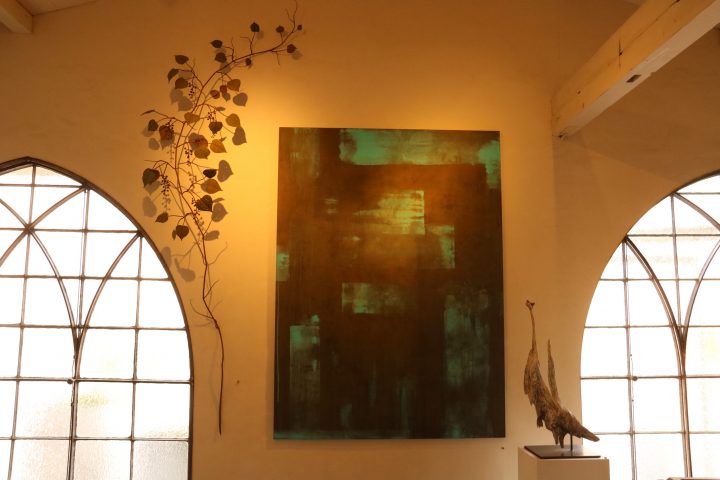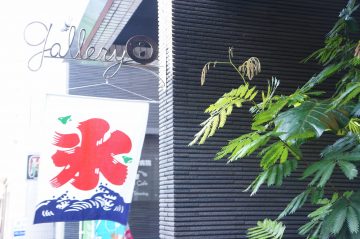Interview with Yu Araki | Thinking about "originality" through imagination born from discrepancies
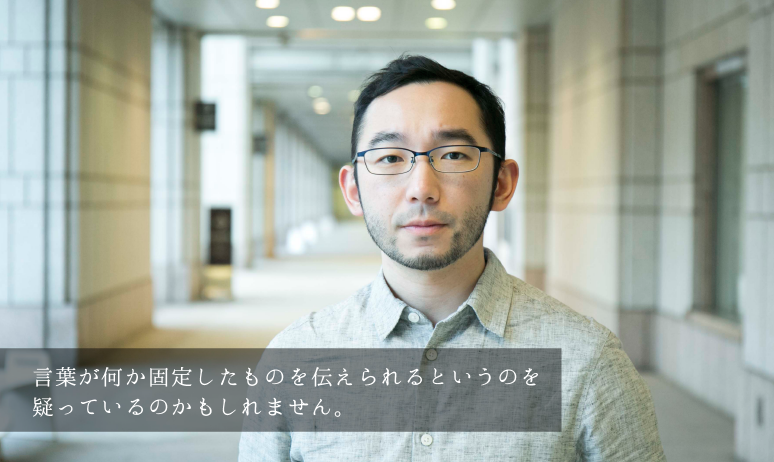
"Original and Copy." From culture and lifestyle to issues surrounding originality of expression and plagiarism, this theme is broad and profound. For artist Yu Araki, who spent his childhood in the United States and is now based in Japan, creating works all over the world, the concept of "real" and "not real" seems to have always been connected to his own identity. The title of his latest solo exhibition, which is the largest of its kind to date, is "The Temple of Reproduction." We visited him at the Yokohama Museum of Art, where the exhibition is being held, to talk to him.
Interview & Text: Shinichi Uchida Photo (Portrait): Masamasa Nishino
Two or Three Parthenons
--The first piece that greets visitors at your latest solo exhibition, "Replica Temple," is the same-titled work, which is a strange looped video of the Parthenon, a famous World Heritage Site, and Araki himself jogging endlessly around it.
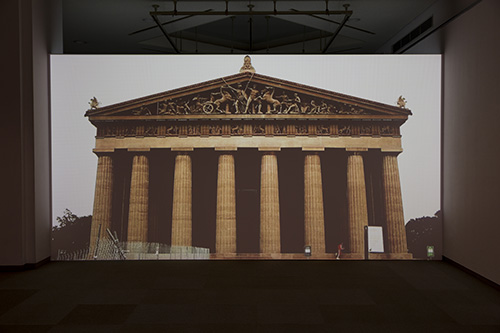
"Replica Temple" 2016, installation view Photo: Shintaro Yamanaka
Araki : The same images are shown on the front and back of the exhibition room walls, one of which is a full-scale replica of the Parthenon in Nashville, USA, where I grew up. It was built in 1897 for the Tennessee Centennial Exposition (originally scheduled for 1896, but postponed to the following year due to the presidential election and construction schedule). It is a relic of the time when plans were made to make Nashville the "Athens of the South." Although I was familiar with it from an early age, I grew up not knowing that it was a replica, so when I later found out about the existence of the real thing in history classes, I had mixed feelings. Probably not only for the Parthenon itself, but also for myself, who had been exposed to it all this time without knowing the original.
--Araki's exhibition debut was in the underground space of this Parthenon replica, when he exhibited a self-portrait at an event that brought together art works by high school students when he was a high school student.
Araki : Yes. The underground space of the replica Parthenon and Art Gallery 1 of the Yokohama Museum of Art, where this solo exhibition will be held, are so similar that they resemble twins, and this was also the inspiration for the "Replica Temple" exhibition.
--So you're going to see the "real thing"? If so, is that the original Parthenon in Greece that's reflected on the other side of the wall?
Araki : With that in mind, I actually planned to go to Athens and somehow take photos, but it was difficult, and in the end I was not given permission to take photos. This was three months before the exhibition. Just as I was at my wit's end, I heard that there was a replica of the Parthenon in Edinburgh, Scotland, so I looked into it and found that it really did exist. What's more, it was built more than 70 years before Nashville, so it was the original replica, so to speak (laughs). So I quickly flew to "Athens in the north" and took photos of the Scottish National Monument projected on the other side of the wall.
--It's interesting that while the structure is like a journey in search of the "original," they are actually both reproductions.
Araki : In the end, the copies were connected to each other, and I continued to run around in a world where the original did not exist. I think that the unexpected situation made the work stronger than the original plan.
Worried about my authenticity as a returnee
--This entire exhibition has a perspective of "What is an original, and what is a copy?" I would like to ask you about this, but I feel that it may be related to the background in which you grew up. So, can I start by asking you about that?
Araki : Due to my parents' work, I lived in Cleveland from the age of 3 for about a year, then moved to Nashville and returned to Japan when I was 6. However, when I was in the second year of junior high school, my family moved to the US again and I lived in Nashville again. I stayed in the US until I graduated from college, then returned to Japan and have been here ever since.
--What was your student life like over there? There seem to be big differences in language and culture.
Araki : My high school was a public school, and it was a pretty rough place. One of the students brought a gun to a basketball game, and the next week they installed metal detectors in the gymnasium (laughs). Also, although it's not particularly related to that, the film director Harmony Korine was a senior of mine.
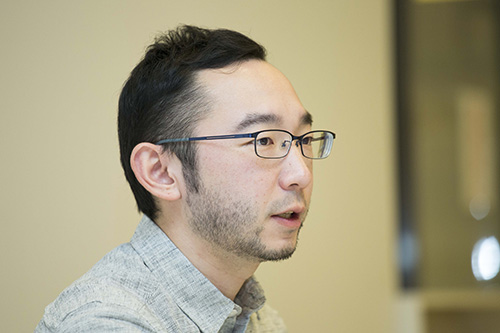
--I see... What kind of high school student were you, Araki-san?
Araki : Anyway, I was desperate to fit into the culture over there. I tried to fit into a certain mold, which was foolish in retrospect, but I observed my classmates with the intensity of trying to copy them perfectly. I went to church even though I wasn't a Christian... although this was also because of my relationship with my family who looked after me in place of my parents who returned to Japan halfway through.
--You didn't return to Japan with your parents, did you?
Araki : Yes. Looking back, I think I didn't have much attachment to Japan as "home". Also, after the 9/11 terrorist attacks in 2001, I decided to stay for a few reasons, including the fact that my visa status meant that it might be difficult to re-enter the US once I left. When I graduated from college in 2007, I decided to return to Japan for now.
--Do you think those experiences had any influence on your later creative endeavors?
Araki : I think there is definitely something like a split personality that is unique to so-called returnee children, because their voice, behavior, and even their thoughts change depending on the language they use. Perhaps due to this influence, there always seems to be a perspective in my work that seems to go back and forth between two things. This feeling of indecision gradually makes me wonder if I'm a fake, and then I start to wonder what it means to be real...
--It certainly exists, but you wonder where its roots lie. That seems to be connected to the theme of your current solo exhibition.
Araki : That may be so. For example, there is an older work called Deep Search, which captures the process of using a gastroscope to find a small doll that I had swallowed. Originally, I had the desire to use a camera to confirm the view of the body that I had never seen before. The doll was made overseas, so it has the appearance of a white man. Recently, I suddenly thought, "Maybe that unconsciously expressed the feeling of the Americanness inside me being removed after returning to Japan." It has been seven years since I made it, but I feel like I finally understand the meaning of the work.
Deep Search, 2009
The appeal of mistranslation and misalignment of images
--From the perspective of "what is real/what is not," I feel like many people have similar feelings at some point. Where/what you belong to, is this your true self, where you really belong... and so on.
Araki : In my case, the language of English and Japanese was a big factor, so I think that from there, my interest in mistranslations and misconversions started to grow. In a related vein, I also became interested in connecting things that were not directly related. For example, my graduation project at the university over there involved collecting countless images of horses from the Internet and playing them in succession to create an animation of a running horse (971 HORSES + 4ZEBRAS, 2007). This was based on the motif of a series of photographs of galloping horses taken by British photographer Edward Muybridge in the late 19th century.
《971 HORSES + 4 ZEBRAS》2007
--Why did you choose a style based on visual expression?
Araki : At first, I majored in sculpture at university. I think I wanted to make something. However, I found that I was not good at it at all, and in the end, I did not make a single sculpture during my time at university. But at that university, if it deals with time and space, it was recognized as sculpture in a broad sense. Even if I brought bread to the critique, they would see it as "pottery" (laughs). I couldn't make it, but I could take pictures, so I started using a camera.
--What is the appeal of video to you, Mr. Araki?
Araki : I still find it fascinating that things that were originally shot at different times and places can be edited to make them seem connected. The task of carefully observing the footage and thinking about how to connect them feels somewhat similar to the task of translating two foreign languages. However, in production, I am more attracted to the leaps in meaning that arise from "mistranslations" than the accuracy required for actual translation. For example, I think that plastic models are a medium that is prone to situations where you proceed without reading the instructions and just assume that "this and this will go together," resulting in an impossible shape.
In the overlapping stories
--I've ended up asking a lot of questions, but I'd like to get back to the topic of your solo exhibition. Speaking of "connecting things that are seemingly unrelated," I was impressed by Araki's vibrant jersey outfit in "Replica Temple," which seems out of place against the profound dignity of the ancient ruins.
Araki : That's Adidas Originals clothing. I chose it because the famous trefoil logo is based on the laurel wreath given to the winners of ancient sports. By the way, the relationship between Germany, the birthplace of the brand, and Greece is also very deep-rooted in diplomacy, dating back to the neoclassicism and the first modern Olympic Games in 1896. I was told by a local Greek that even if permission was granted to shoot at the Parthenon, the Agency for Cultural Affairs there might point out the political nature of the costumes in context.

Searching the Original, 2016, HD video
--One of the characteristics of this solo exhibition is that such associative devices can be seen everywhere. I felt that the highlight, your first full-length video, "Searching the Original," was particularly packed with such ideas. As the title suggests, the film takes as its theme the question, "What is the original?" and proceeds with a mysterious setting in the form of a monologue (?) by the statue of the ancient god Dionysus found in the Parthenon.
Araki : The footage was the result of lining up the footage I had shot over a period of about a year on a single timeline and slowly carving it away like carving stone. There was no script or storyboard, and I was most concerned with how to edit the fragments I had just shot and collected at various locations. In the process, I decided that this film needed a story, and I adapted and quoted Thomas Mann's novel Disillusionment (1896). I imitated cinematic grammar in my own way, but I thought about it from the footage I had shot without deciding anything in advance, so there are both functional and non-functional scenes. It's a bit questionable whether it can even be called a scene because of the way it was made.
--I'm also curious as to why you chose "Disillusionment." The novel itself is about a man who has acquired knowledge about life through books, but is disappointed as he experiences things for real, thinking, "Is that all there is to it?"
Araki : There is a passage in the novel where the protagonist is disillusioned after seeing a famous work of art, and I felt a strong sense of empathy while reading it. That is because that is what I felt when my wish came true and I finally reached the original Parthenon. Of course, I knew it was a historically important ruin, but somehow I expected it to be more than that. And above all, strangely enough, due to the reproduction technology, the Parthenon in Nashville and other places were just the same as the photos and videos I had already seen. After experiencing this sense of déjà vu, I realized how much passion had gone into the full-scale replica in Nashville, and I was impressed by the perfection of the replica.
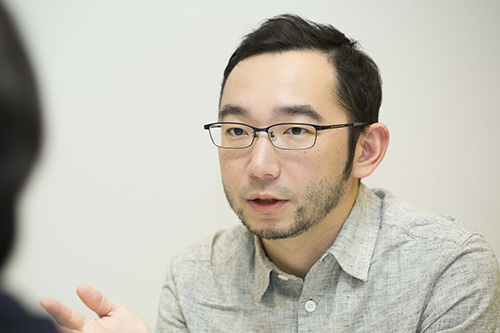
--The story behind that is also interesting in thinking about originals and replicas. Searching the Original is structured in such a way that several stories run simultaneously. One of them is footage of a contemporary American high school student in the week leading up to graduation, and at first glance they seem completely unrelated...
Araki : The high school student is Lucas, the youngest child of the family that I lived with in America, and he is my younger brother. I went to Nashville last May to attend his high school graduation ceremony. He was very natural, not even aware of the camera lens, so I filmed his daily life up until his graduation. When I looked back at the footage of him, now grown up and lying on the sofa eating snacks, I realized that his pose and posture were very similar to the Dionysus statue at the Parthenon. At that moment, I suddenly saw an image of ancient and modern times connecting, and the sculpture was alive and moving. Another thing is that the story progresses at the same time as me going to find the quarry where the marble that became the material for the Parthenon was obtained. When I actually went there, I found a cave, which reminded me of Plato's allegory of the cave (the people who live in the cave believe that the "shadow" of the "substance" is the substance itself. In the same way, what we see in reality is merely the "shadow" of the idea), and I incorporated elements that would create such associations into the footage.
--Was the slide show work "Fig." in front of this work the starting point of this idea? It alternates between the projection of family photos of Lucas and his siblings, which reminds us of the commonality between the form (figure) and a number of ancient sculptures.
Araki : Yes. As for "Fig.", it is a really private photograph, so I was quite worried about the ethics of making it. But there was no point in worrying, so I took the plunge and asked them directly, and they said, "It's okay." I understood that this was proof that they recognized me as a member of the family. At the same time, the album also contains time that I did not spend with them. I wanted to deal with my very strange position, being half family and half stranger, in a dry way, so I gave it the title "Fig." From the perspective that both family photographs and ancient sculptures were created to leave evidence of their existence, these images seem to me to be the same.
The meaning of "original" glimpsed through a chain of images
--In addition, the young man who accompanies you on the journey to the mines is called "Lafcadio," which brings to mind the Greek-born Koizumi Yakumo (Lafcadio Hearn). There are also countless hooks scattered throughout the film, such as a modern woman who makes a life-sized sculpture of a hand in response to the armless Dionysus statue. It suddenly reminded me of the fascinating artists who adopted this technique of expanding the world by connecting seemingly unrelated facts and fiction, but what kind of expression were you trying to express with this work?
Araki : In my case, I think I'm interested in the degree of discrepancy when overlapping things that may be unrelated. I happened to be interested in the woman who makes hand sculptures, so I photographed her, but her real name is Penelope, the same name as a goddess in Greek mythology. I would be happy if you could expand your imagination that arises from the discrepancy within such a chain of images. In my films, I like directors who use various quotations from other masterpieces and expressions outside of film. On the other hand, this may mean that I doubt that words can convey something fixed.
--I would encourage readers to see this film for themselves to find out how it ends, but I took Jean Cocteau's paradoxical words about originality that appear at the beginning to be a message.
Araki : I feel that the modern mythical idea that "original" is the best is still deeply rooted, but on the other hand, it is also true that the concept of "original" only came into existence when reproductions appeared. However, for example, the Parthenon in Nashville was also an original experience for me as a child, and there was a certain reason and politics behind it being quoted in the context of that place in that way. However, I feel like I have found the answer, but at the same time, I don't, and I'm still going around in circles.

Casting Studies, 2016, 5 HD videos
--The five small video works "Casting Studies" shown at the end of the exhibition felt like a kind of note left behind by Araki, giving the impression of those lingering impressions and continuing thoughts.
Araki : Each of these captures a stage just before they reach the realm of creation or expression, such as making bread to eat, fixing a broken machine, making a base for painting, or practicing the piano. When I was filming the movement of my hands in the process of making a model for casting, I felt that this was more sublime than the sculpture itself that was completed. I don't know if I can call it aura, but I feel that there is authenticity in the way I am working on something, so I decided to have them see it at the end.
--Listening to your talk today, I thought that while your work is in some ways rooted in your somewhat unique background as a returnee, your interest in concepts like real and fake means that people from all walks of life can relate to it in their own way.
Araki : I don't think returnee children are that rare, but I do think that life would be a little easier for them if society focused on the possibilities of going beyond the mold, rather than forcing themselves to fit in with the environment they are in or fitting in with those around them.
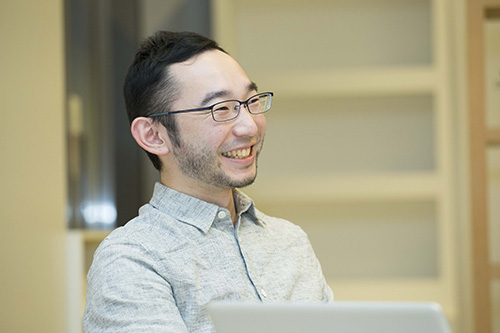
--Finally, could you say a few words to the people visiting the exhibition?
Araki : I would be happy if you could find a "story" in the differences between the images by looking at them in your own way.
